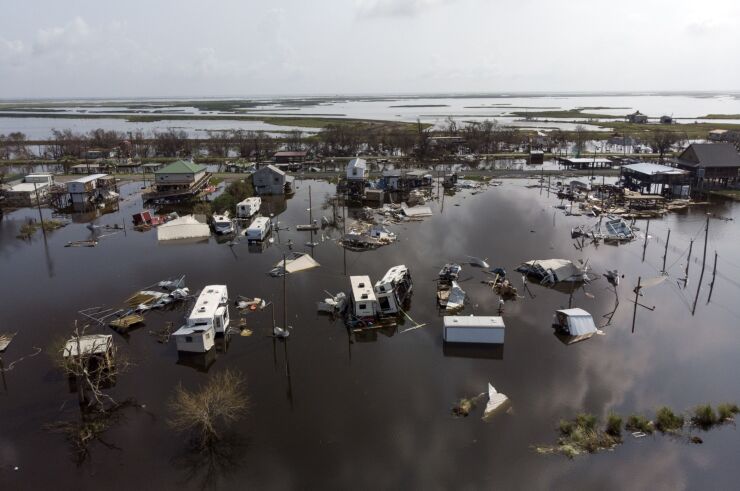With about 94% of the $55 billion of federal funding from the 2021 Infrastructure Investment and Jobs Act for the country's water and wastewater needs yet to be disbursed, issuers may not need much in the way of municipal bonds for water infrastructure, analysts said.
Bond issuance for
With these options available, Wellenkamp said, cities and counties see municipal bonds as second or third options to get the work done.

IIJA set aside $55 billion for state revolving fund loans for water and wastewater projects but only 6% of this has been paid out so far, Reese Tisdale, president and chief executive officer at Bluefield Research, said during a Volcker Alliance webinar Thursday.
The slowness in distributing the funds is less related to need than the Build America, Buy America provision, which dictates the use of U.S.-produced materials, he said. Disbursement has also been delayed by the increased costs of materials, projects, and labor and by the placing of earmarks on the use of funds.
The infrastructure law will provide funds through federal fiscal year 2026, with most of its benefit for water systems expected in the future, Tisdale said.
Federal funding accounted for between 15% and 16% of water sector budgets in 1976, but dropped to somewhere from 1% to 5% today, Tisdale said.
The federal government in 2012 estimated the country needed $271 billion of clean water infrastructure spending and a 2021 study that said it needed $625 billion for drinking water infrastructure spending. U.S. Environmental Protection Agency Senior Life Scientist Nicole Lick said the clean water estimate is low and will almost certainly be raised when the government releases a new study soon.
Penn Water Center Executive Director Howard Neukrug said he believed $2 trillion will be needed to meet the goals of the existing Clean Water and Safe Drinking Water acts.
The top challenges facing the water sector are climate change,
The public water utility sector has some strategies to address its challenges.
Water supply is a "real crisis," said former U.S. Sen. Bill Bradley. Local, state, and federal agencies must work together to address it. Water should be priced at a free market level, which would benefit residential and industrial users, Bradley said.
Desalination and reuse are among the technologies being developed to aid the sector, Neukrug said.
Doug Evanson, executive vice president and chief financial officer for San Antonio Water System, told of the public-private development in the past decade of the Vista Ridge Supply Project to increase water supply to the rapidly growing San Antonio, Texas, area. By July 2021, the water system was receiving 50,000 acre-feet of water per year from the project.





